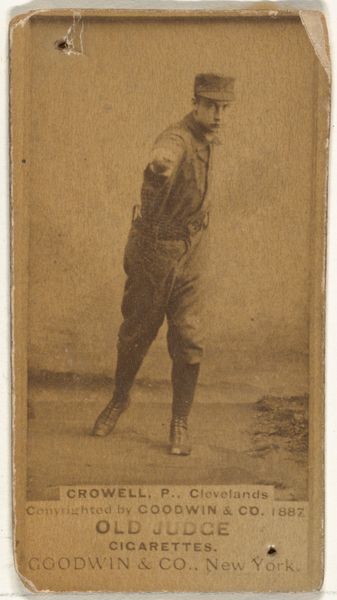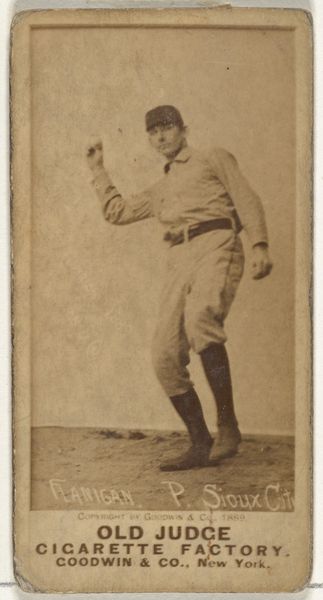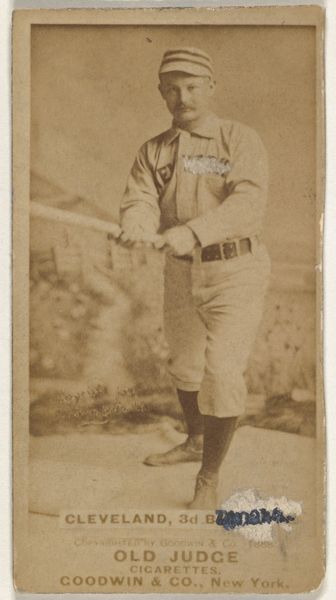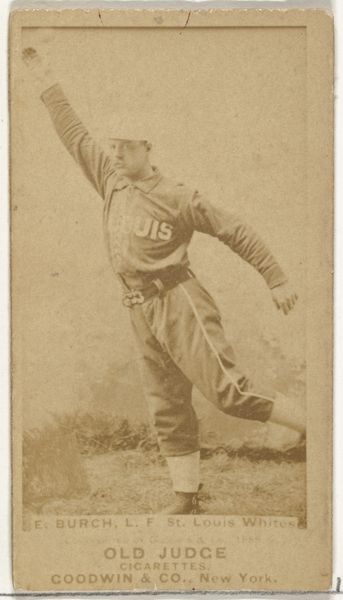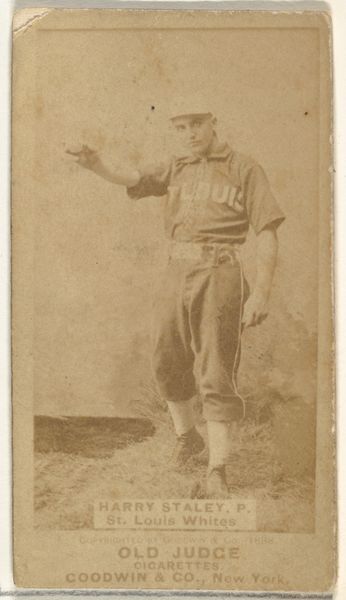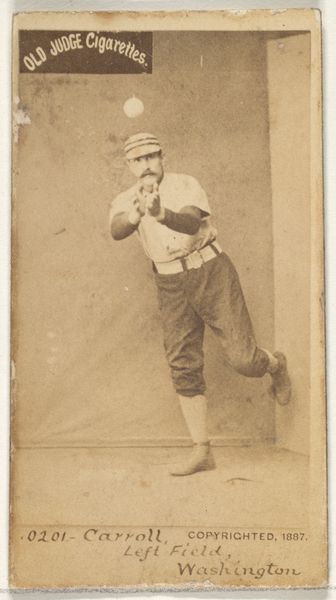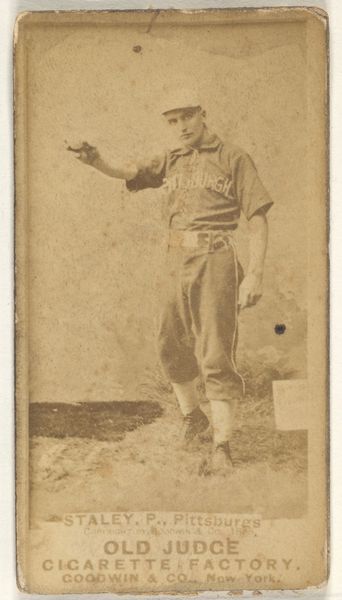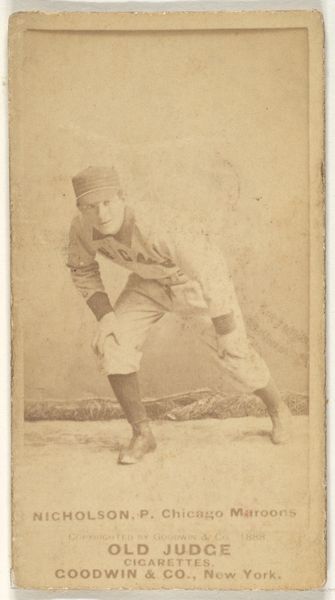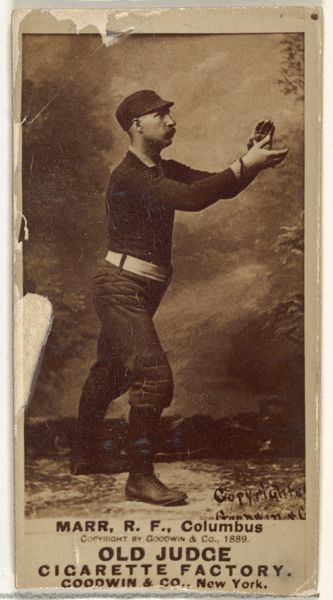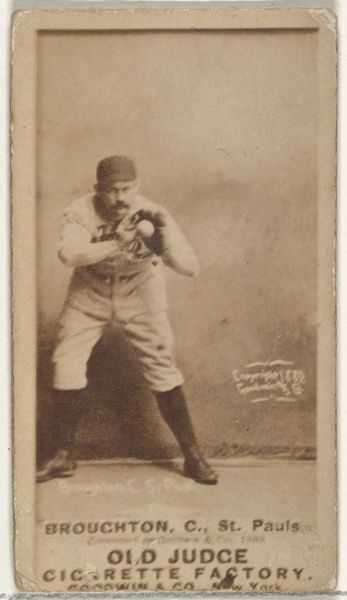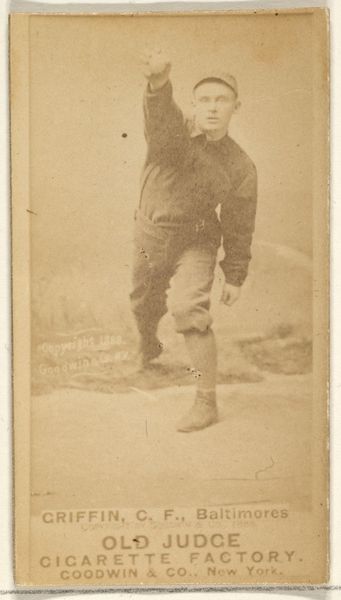
Tucker, 1st Base, Baltimore Orioles, from the Old Judge series (N172) for Old Judge Cigarettes 1888
0:00
0:00
drawing, print, photography, gelatin-silver-print
#
portrait
#
drawing
# print
#
baseball
#
photography
#
gelatin-silver-print
#
men
#
athlete
Dimensions: sheet: 2 11/16 x 1 3/8 in. (6.9 x 3.5 cm)
Copyright: Public Domain
Editor: So, this is "Tucker, 1st Base, Baltimore Orioles" from 1888, a gelatin silver print from the Old Judge Cigarettes series. It feels almost… archaeological, a fragment of early baseball culture preserved in this tobacco product promotion. What stands out to you? Curator: The interesting element is the entanglement of sport, image production and consumption. Consider the materiality: gelatin silver print, mass-produced not as high art but as a commodity insert. Its purpose was to sell cigarettes, embedding this image of athletic prowess within a system of addictive consumption. Editor: So, it's less about Tucker himself and more about… what it represented? Curator: Exactly. Tucker’s image, captured through photography, became a tool of the Goodwin & Company cigarette factory. We have to think about the labour involved in photography and printing at the time, too. It's about how baseball heroes become commercial assets through image-making, tied directly to the labor and materials that create that image. Where does art and marketing blur here, don’t you think? Editor: Definitely makes me see the photo in a different light – as less of a celebration of the sport itself, and more a relic of consumer culture. Curator: Precisely! These images become traces of that specific moment of production and distribution of capital, a commodity-image designed to incite purchase, a visual cog in the wheel of industrialising leisure and habits. Editor: Wow. I never would have considered this photograph within such a socioeconomic context. This has made me rethink baseball cards in an entirely new way. Curator: The value is truly not in the aesthetic qualities of the image but the ways that it illuminates social, cultural, and manufacturing relationships.
Comments
No comments
Be the first to comment and join the conversation on the ultimate creative platform.
